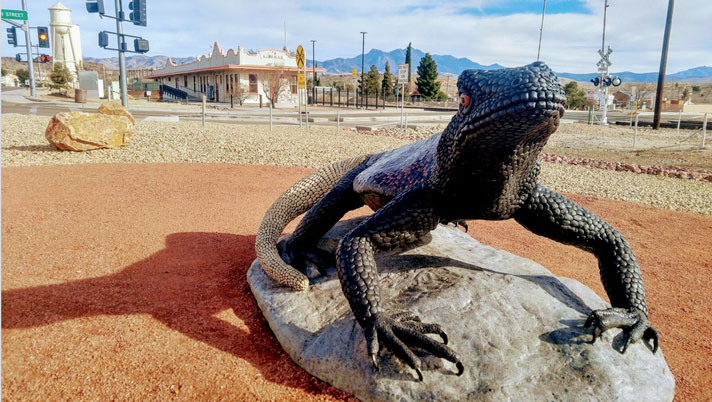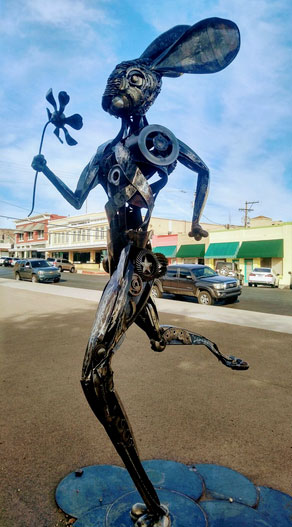This sculpture is certain to generate discussion, like the Running Hare of Kingman.
If you are into reptiles, and want to check out a cool piece of art as you are out herping in Arizona, (I did a bit of herping in Sedona, near Slide Rock a few years back), then you must add the city of Kingman to your list of places to stop. The city just unveiled a chuckwalla lizard sculpture on the southwest corner of Fourth Street and Andy Devine Avenue.

ron lindeboom/Creativecow.net
Chuckwallas are native to Arizona and much of the southwestern U.S. and northwestern Mexico. This sculpture is certain to generate discussion, like the Running Hare of Kingman.
The city commissioned North San Juan, Calif. artist Solomon Bassoff to create the lizard, which is made of metal and Italian mosaic glass. It is the first art piece installed as part of Kingman’s Art in Public Places program, according to the Daily Miner.
Want To Learn More?
More Than 160 Chuckwallas In Arizona Safely Moved Out Of Phoenix Freeway Project’s Path
The sculpture is 7 feet in length, 4 feet wide and 3 feet tall and weighs 1,300 pounds.
“We’ve received a lot of support for the chuckwalla and I’ve heard some more colorful remarks,” Josh Noble, tourism director for the city, told the Daily Miner. “I anticipate the sculpture will generate discussion, which is a large part of what artwork is about.”

ron lindeboom/Creativecow.net
The Running Hare of Kingman, Arizona.
The chuckwalla sculpture joins a rabbit sculpture in town called the Running Hare. Hopefully it will generate lots of interest for us reptile lovers who love to visit The Grand Canyon State.
The chuckwalla is native to Kingman and much of Arizona. The folks of this southwest state seem to love their chuckwallas. Just last fall, more than 160 chuckwallas were relocated from a Phoenix freeway project to the Arizona South Mountain Park/Preserve.
Chuckwallas (Sauromalus sp.) are of the Iguanidae family and grow to about 14 to 20 inches. Like the green iguana, chuckwallas are vegetarians and obtain nearly all their water from the plants that they eat. They are native to the southwestern United States and northwestern Mexico and can live more than 20 years.



